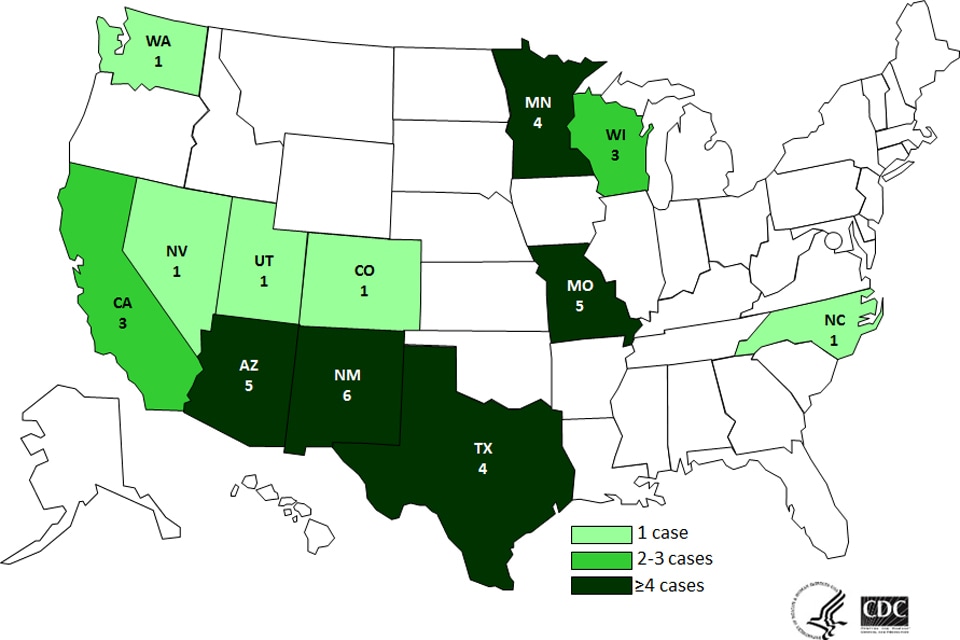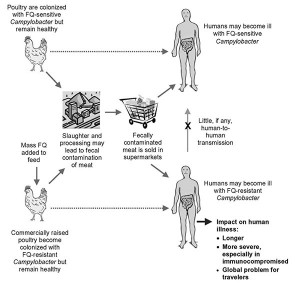In Europe, there have been recent concerns regarding consumption of frozen berries. Unfortunately, Hepatitis A virus (HAV) and norovirus have been linked with these nutritious and tasteful produce. Authorities and food industries have struggled with large and prolonged food-borne outbreaks.

The most recent incident involving HAV and frozen berries lasted from 2013 to 2014. This outbreak began in May 2013, when Germany reported seven hepatitis A cases in travellers coming back from northern Italy. Subsequently, Italy declared the first national outbreak, and other European Union countries reported locally acquired and travel-related cases of HAV associated with the same problem, consumption of berries. From January 2013 to August 2014, 1,589 hepatitis A cases were reported linked with the frozen berry outbreak. 70 % of these cases were hospitalised for an average time of six days, and there were 2 deaths reported (Severi et al, 2015). Trace backs done by the European Food Safety Authority could not indicate a single point source of contamination (RASF, 2015). The frozen berry market in Europe is very complex, considering the produce can be distributed at different times in different countries. Although it is not fully certain, the main suspicious candidates to blame were Bulgarian blackberries and Polish redcurrants, since these were the most common ingredients in the different contaminated samples.
Regarding norovirus and frozen berries, from 20 September through 5 October 2012, the largest recorded food-borne outbreak in Germany occurred. Norovirus was spotted as the causative agent. 390 schools and childcare facilities reported nearly 11,000 cases of gastroenteritis. All affected institutions had received strawberries of one lot, which lead to the identification of frozen strawberries from China as the most likely vehicle of infection. Thanks to the timely surveillance and epidemiological outbreak investigations of the correspondent authorities that detected the case within a week, more than half of the lot was prevented from reaching the consumers (Bernard et al, 2014).
The occurrence of outbreaks associated with frozen berries has raised many concerns, especially with the growth in popularity of fruit-based products like smoothies, ice creams and yogurts. According to literature, in a period from 1998 to 2013, frozen berry contamination with norovirus caused 14,000 reported human cases in 70 outbreaks in six EU countries, namely Denmark, Finland, France, Germany, the Netherlands and Sweden (Tavoschi et al, 2015). The European Food Safety Authority highlights the risk of contamination of berries, because this food commodity often receives no or minimal processing. Contamination and cross-contamination via equipment, water (irrigation and washing) and particularly via food handlers have been identified as the main risk factors (Tavoschi et al, 2015). Also, it is known that viruses like NOV and HAV, can resist freezing treatments and remain latent in the product, which make frozen berries a perfect source of contamination. Since there have been new outbreaks this year (norovirus in Sweden and hepatitis A in Australia), European authorities recommend to be careful when consuming frozen berries. They specially suggest to boil imported frozen berries for one minute before eating, especially if the food is going to be given to vulnerable people such as nursing home residents (FSAI, 2015).

References
Severi, E., Verhoef, L., Thornton, L., Guzman-Herrador, B. R., Faber, M., Sundqvist, L., … & Tosti, M. E. (2015). Large and prolonged food-borne multistate hepatitis A outbreak in Europe associated with consumption of frozen berries, 2013 to 2014. Eurosurveillance 20, 29. Retrieved from: http://www.eurosurveillance.org/ViewArticle.aspx?ArticleId=21192
Tavoschi, L., Severi, E., Niskanen, T., Boelaert, F., Rizzi, V., Liebana, E., … & Coulombier, D. (2015). Food-borne diseases associated with frozen berries consumption: a historical perspective, European Union, 1983 to 2013. Euro Surveill, 20, 29.
RASFF (2015). The Rapid Alert System for Food and Feed, Annual Report 2014. European Commission – Health and Food Safety.
FFSAI. (2015). Berries – Advice to boil imported frozen berries. Food Safety Authority of Ireland. Retrieved from: https://www.fsai.ie/faqs/berries_advice_to_boil_2015.html
Bernard, H., Faber, M., Wilking, H., Haller, S., Höhle, M., Schielke, A., … & Stark, K. (2014). Large multistate outbreak of norovirus gastroenteritis associated with frozen strawberries, East Germany, 2012. Eurosurveillance, 19(8), pii-20719.














